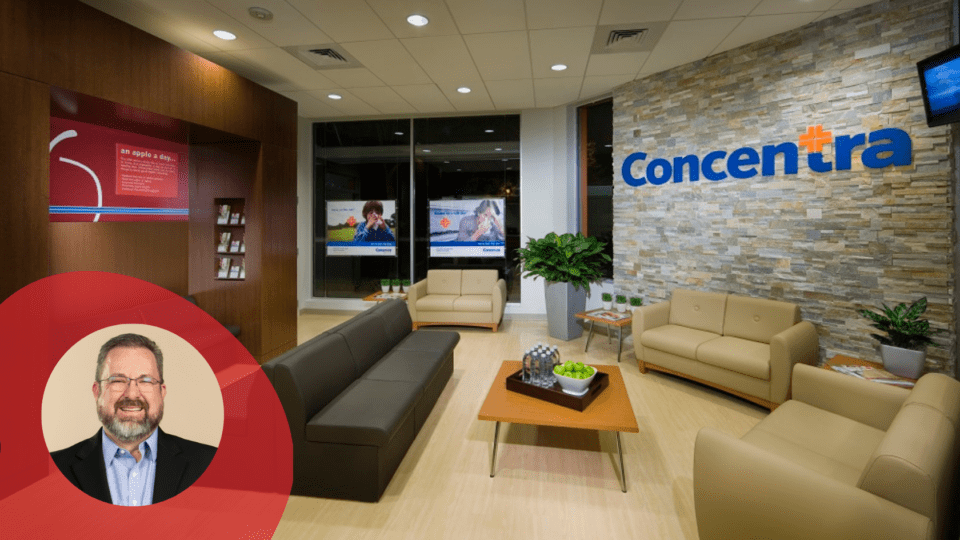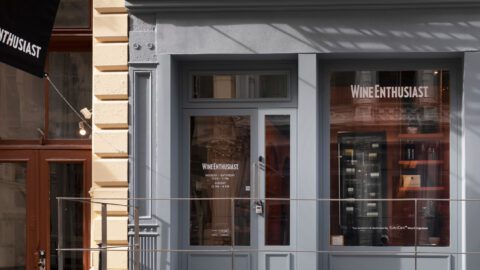The innovative concept of “Medtail” seamlessly integrates healthcare services into retail environments. This blend of medical expertise and retail convenience is revolutionizing the landscape of patient care, changing both where healthcare is delivered and how patients experience it. Moving beyond the conventional boundaries of hospitals and clinics, this approach offers unprecedented convenience and accessibility by bringing healthcare closer to where people shop, eat, and engage in their daily lives.
By examining the driving forces behind the rise of Medtail, the critical considerations in designing these spaces for patients and communities and its significant impacts on businesses and organizations, we can understand Medtail’s role in modern healthcare and retail sectors.
Examples of Medtail spaces include:
- Pharmacies nestled within supermarkets;
- Wellness clinics in vacant retail spaces;
- Urgent care centers in shopping malls or retail strip centers; and
- Veterinary clinics in accessible shopping centers.
Companies design these spaces to provide healthcare services in a consumer-centric manner, focusing on the patient’s experience and leveraging innovative retail strategies. At Little, we evolved our Retail Practice to include a dedicated Wellness Studio that goes beyond the standard doctor’s office to focus on Medtail clients’ unique needs.
Driving Factors Behind Medtail
The rise of Medtail is here to stay. With its increasing popularity, Medtail’s growing emergence is propelled by several influential factors.
- Changing demographics: An aging population and a general increase in health consciousness across all demographics have heightened the demand for more accessible healthcare services.
- Market trends: The ongoing evolution of the retail industry, including the strategic repurposing of malls and shopping centers, has opened new avenues for healthcare service integration.
- Accessibility needs: The pressing need for healthcare services to be more accessible and seamlessly integrated into everyday life is a driving force behind the Medtail movement.
- Development needs: Landlords that need to fill vacated retails spaces are looking to health and wellness tenants as the Medtail sector continues to grow.
Retail Strategies in Healthcare
The confluence of retail and healthcare benefits patients through a variety of fundamental design strategies.
- Accessibility: By situating healthcare services in locations already part of the target demographic’s routine, Medtail spaces enhance access to care.
- Specificity and clarity: Services are customized to meet the community’s unique needs and presented in a manner that is clear and understandable to the consumer.
- Agility and virtual integration: The rapid adaptation to changing healthcare demands and the incorporation of digital health solutions are crucial aspects of Medtail’s approach.
- Visibility: The placement of healthcare services within retail environments significantly boosts their visibility, promoting more significant public health awareness.
Focus on Social Design
Designed Medtail spaces aim to build trust and improve the patient experience by emphasizing social design principles.
- Cross-generational design: Ensuring spaces are welcoming and accessible to individuals of all ages, with technology implemented to enhance rather than complicate the healthcare experience.
- Improving patient experience: Thoughtful design elements, such as biophilic features, comfortable waiting areas and private treatment spaces contribute to a positive and reassuring patient experience.
- Serving underserved demographics: By locating in centers or areas with access to public transportation and other accessible modes of transportation.
Retail and Wellness Trends
Medtail design actively harnesses several key trends seen in both retail and wellness spaces.
- Biophilia: Integrating natural elements into the design fosters healing and well-being.
- Efficient layouts: Designing spaces that streamline the check-in process and patient flow improves the efficiency of care delivery.
- Telemedicine integration: Creating spaces that support virtual healthcare services caters to digitally connected consumers.
Retrofitting Retail Spaces for Healthcare
While retail spaces offer perks like high foot traffic and ample parking, adapting them into healthcare facilities presents unique challenges and opportunities.
- Innovative design solutions: Addressing structural limitations is key to creating functional, welcoming healthcare environments.
- Material and design considerations: Choosing durable, easy-to-clean materials offers an inviting, comfortable patient atmosphere.
Impacts of Medtail
The rise of Medtail has far-reaching implications, from the individual patient to the wider community.
- Revitalization of commercial spaces: The conversion of underutilized retail spaces into healthcare facilities injects new life into aging commercial properties.
- Benefits to healthcare organizations: By expanding into retail spaces, healthcare providers can enhance their accessibility and visibility, improving public health outcomes and patient satisfaction.
- Community well-being: Medtail’s approach to bringing healthcare services closer to where people live and shop has significant potential to improve community health and well-being.
Medtail represents a paradigm shift in healthcare delivery, emphasizing accessibility, efficiency and patient-centric care in a retail format. This innovative blend of healthcare and retail meets the community’s evolving needs and sets the stage for future advancements in healthcare delivery models. As Medtail continues to grow, it promises to redefine the patient experience, making healthcare more integrated, accessible and aligned with the rhythms of daily life.
John Quinn, AIA, CDT, NCARB is Retail Studio Principal, Wellness for Little Diversified Architectural Consulting. With more than 20 years of architectural experience, Quinn’s expertise has focused on retail projects, with an emphasis on national prototype rollout programs and restaurant facilities. He works closely with Little’s design team to ensure each client’s vision is fully integrated within every project phase, assuring the quality of execution is executed seamlessly. Quinn is a graduate of the University of North Carolina at Charlotte.








